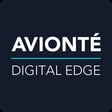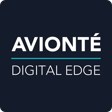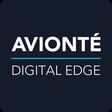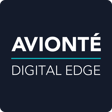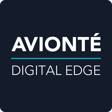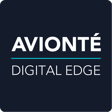Aviante's Role in Staffing Tech
00:00:00
Speaker
Imagine a software platform that is used by tens of thousands of recruiters, salespeople, and administrators from over a thousand different staffing agencies to hire, track, and pay four million employees annually. In this mission-critical environment, users expect 90 millisecond transaction times, 100% uptime, protection from natural and man-made disasters, and foolproof security. And oh yes, it should be easy to use.
00:00:28
Speaker
What does it take to design, deliver, and operate a modern end-to-end digital staffing and recruiting platform?
00:00:38
Speaker
Welcome to Aviante Behind the Curtain, a podcast series that focuses on the technology that powers the modern tech stack used for staffing and recruiting.
Meet the Hosts: Chris Ryan and Odell Tuttle
00:00:47
Speaker
My name is Chris Ryan, and I'm the Chief Strategy and Marketing Officer for Aviante. In Behind the Curtain, we talk directly with subject matter experts responsible for designing, building, and deploying staffing technology.
00:00:59
Speaker
and we will look at all aspects of technology, from software and the user experience, to the emerging role of artificial intelligence, and even to some equally important but esoteric topics like architecture, infrastructure, and security. So let's go behind the curtain. My guest today is our chief technology officer, Odell Tuttle, or OT as we like to call him, and we're going to get a CTO's insight and overview of the Aviante software platform.
00:01:27
Speaker
Before I introduce OT, we need to set the stage a little. For starters, let's acknowledge that most people who work in human resources, recruiting and staffing are not computer experts. They are people experts. They know how to network, sell, evaluate,
00:01:42
Speaker
recruit and coach people. When it comes to technology, not so much.
The Impact of Technology on Workforce Trends
00:01:47
Speaker
They want technology that works well in their problem space, but they don't often ask how. So why is it so important for our industry to have insight and understanding into the direction of technology?
00:01:59
Speaker
Well, let me give you the short answer. Our industry has reached an inflection point where labor and workforce trends, the development of gig work and mobile phone applications are all coming together to create new opportunities for innovation, but also risks for technology laggards.
00:02:18
Speaker
There are new emerging technologies that allow us to consumerize the entire employment experience for talent and to enable it remotely.
Challenges with Scalability in Staffing Tech
00:02:27
Speaker
It's now possible to recruit, hire, schedule, track time, pay and redeploy talent from the convenience of a mobile phone. You can buy and sell work by the hour, schedule shifts by the hour and pay it in the same day.
00:02:41
Speaker
And the hard truth about technology today, particularly in staffing and human capital applications, is that there are a lot of boutique VC-backed software vendors that have great marketing materials and might work well for a limited use case, but ultimately aren't scalable or sustainable.
00:02:59
Speaker
You may not be interested in technology, but technology is interested in you. And the decisions you make will have a direct impact on your ability to remain competitive in the future, protect your business from data breaches and ransomware attacks, and grow and expand. And ultimately your ability to retain both your recruiters and your talent by delivering an effective user experience.
Odell Tuttle's Journey to CTO
00:03:23
Speaker
So with that, I'd like to welcome OT to the discussion. And to start our discussion OT, tell us a little bit about yourself and your background.
00:03:32
Speaker
Sure. Thanks, Chris. Thanks for having me. I look forward to the conversation. I was a bit of a hacker. When I was in college, when the other kids were kind of hanging out, I was the guy at my computer cranking out code, trying to invent something on my own. And that's how it was for me. In the early days and off in college, even in business school, I was the one trying to figure out a way to apply software to solve a bigger problem than maybe the one we were looking at. That has continued to drop my career as I've come
00:04:01
Speaker
up through the ranks of software engineer, software architect, enterprise architect, chief architect, and VP of engineering, and ultimately a CTO role at a number of different companies in the tech space. And fortunately, like I've said many times, I've had the good fortune that I've been able to work in many different industries as they've all been going through this evolution to adopt
00:04:24
Speaker
new and more modern technology. And so I've gotten to learn and get familiar with so many different industries and the staffing industry is the one that I'm getting familiar with now. And that's just super exciting for me and the changes that is going through on our next phase here. Yeah. So I have to ask you just as a side curiosity, what was the first computer language you learned to program in?
00:04:46
Speaker
Well, I think the very first one would have been basic because my first computer was a Commodore 64, but the one that I first started really doing in the real business world was C and then C++. And you've gone from there. So you basically have worked your way up the ranks in technology. You started with coding applications and you've sort of grown with time over the years, ultimately to become a CTO.
00:05:11
Speaker
Over the years, you've seen quite a few trends.
AI and Cloud Computing in Business Apps
00:05:14
Speaker
I mean, if you started with a Commodore 64, that means that you know a thing or two about how technology has changed. So tell me, what are some of the most important trends you've seen around technology development?
00:05:25
Speaker
It's interesting, while so much has changed, there's still so many things that are still the same and we go through a lot of repetitive cycles in the world of computer technology. I think some of the most profound ones that we're all seeing in the headlines now is related to AI and some of the tech intelligence that we can take advantage of now, but it's interesting that
00:05:48
Speaker
Many of the originating modules, the math and science behind all of that, you know, were from the 1970s and 1980s. And it's really only now because of utility computing, cloud computing, where somebody can stand up a supercomputer with just a little configuration into one of the cloud environments.
00:06:06
Speaker
that we're now able to fully harness and see those advances in the real world. And because of that, you know, be able to apply them to somewhat more traditional business applications, whereas before they were reserved for, you know, scientific research.
00:06:22
Speaker
Yeah. So what I almost hear you saying is the math has always been there, but it's taken a while for the hardware to catch up with the theory to make it possible. Yeah, exactly. Like Morris law, right? The computing power that we have now into what has consolidated into the three or four major cloud providers is the ability to harness all that. Even if you're not, you know, NASA, you can take advantage of it and you can dabble in it before you make a big investment and take advantage of those capabilities.
00:06:50
Speaker
Yeah. So you said, you know, in your career, you've worked in a variety of different places. Tell us a little bit about some of the industries you've worked in. I've heard some technologists say that technology is pretty much the same across all industries. So I'm going to be kind of curious how you answer that.
00:07:09
Speaker
Yeah, the number of industries is quite a few. Insurance, trucking intelligence, e-commerce, real-time analytical market basket analysis, youth sports, home building, healthcare, staffing is the latest. And to your point, there is a lot of similarity in the tech stacks between these different industries. Now, there's some differences too in the way that they're applied.
00:07:35
Speaker
But the common underlying things that they all require are a highly scalable, secure, user-friendly, high-performance application that can be maintained, it can be evolved, it can be modernized, it's interoperable. And you do that with design patterns and architectural patterns and even process and methodology that for all test purposes is very similar across these different
00:08:05
Speaker
these different industries. If I hear you correctly, what you're saying in part is that, you know, great software looks, you know, looks a certain way, whether you're dealing with say trucking or youth sports, or whether you're dealing with healthcare or staffing. Is that, is that fair?
Unique Challenges in the Staffing Industry
00:08:23
Speaker
Yeah, the real thing that's different is really the business domain and the activities that the user is carrying out and a little bit of the physical environment where they're conducted. But by and large, the rest of it is there's a lot to be shared between industries. Yeah, so tell us what you think is special or unique or unusual about staffing and recruiting as an industry and the challenges of designing software to work in this industry.
00:08:52
Speaker
Well, a couple. One is it's an extremely regulated industry with a number of security requirements and privacy requirements and government regulations that affect different jurisdictions and the way staffing is performed in those different jurisdictions. So there's a pretty heavy lift to ensure that you're compliant, you follow all the rules and you do it right. But the other one, simultaneous to all of that, is it's rapidly evolving.
00:09:16
Speaker
The way that workers find jobs, the way that employers staff their organization, and the way staffing companies fulfill and deploy their workers is all changing. And we're all watching what's happening with the gig economy. We're all watching with remote work and how that's evolving, kind of how all actors in this space are changing the way they work. And the technology is a big piece of it.
00:09:39
Speaker
So kind of this traditional highly regulated industry mixed with rapidly evolving technology has created kind of a perfect storm of some pretty big cognitive projects for us. What would you say are some of the largest challenges around that?
00:09:57
Speaker
Arguably, how much can an employment or hiring cycle change? Well, a little bit of it is where workers look for work, how they find work. Online tools and portals are evolving, gig marketplaces are popping up, new ones are happening. People may look for work in Facebook, they may look in Indeed, they may look in more traditional methods.
00:10:20
Speaker
The advancement of mobile and the different portals online in marketplaces where people find work would be just a good example of something that's changing. So one of the challenges that you face is trying to figure out which channels to work with in order to reach talent, to reach a worker. And presumably, I think in the staffing world, we talk a lot about omni-channel. Is that a polite way of saying that staffing software in the future basically has to be able to talk to anywhere through any medium at any time?
00:10:51
Speaker
That's exactly right. With the number of tools that are coming about, the ones that exist today and the ones that are modified, changing, added on a regular basis, you can't possibly have the imagination to predict exactly what the user experience should look like in the future. So you need to be completely interoperable.
00:11:10
Speaker
You need to be able to integrate with every job board, every agency, every third party tool, every payroll processing engine, every tax engine. You need to be able to hook in with services and systems that exist today and the ones that we haven't even conceived of yet as they adopt and adapt going forward.
00:11:29
Speaker
Being able to have an open API, the ability for developers to easily come from these other organizations and plug into our platform, our enterprises to be able to plug in and do it, do it in a secure compliant manner is, is, you know, foundation to our tech strategy. From an investment standpoint, is it more important to invest in, in having certain, certain capability or a certain channel, or is it more important to be flexible?
00:11:56
Speaker
have interoperability, as you say. I mean, it sounds like there are a thousand different projects you could invest in. How do you decide what's most important? Right. Well, I think it's a little bit of both. You need to build a great user experience with the tools, services, and products that exist today in the market.
00:12:16
Speaker
But probably a little bit more important than that is to be able to keep your platform capable of adapting, being able to plug in others, being able to have a rich API. We use terms like API first, which means the first thing we think about when we build capabilities is what they look like in their API form. And then we build user interfaces and applications on top of that.
00:12:40
Speaker
APIs and interoperability are not an afterthought or a bold on their core and foundational. How do you do that? I mean, most software platforms have a history. You start out with a core capability. I mean, Aviante has been around since 2005. A lot has changed over the years. So how do you actually put these new capabilities into place with the platform that you have?
00:13:05
Speaker
Well, it comes down to design patterns, architectural patterns, and a lot of these have been around for a while. But, you know, there's some good thinking in software design that is if you, you know, in database design and API design and just general domain design is
00:13:20
Speaker
If the applications, entities, and operations look largely like the business domain that they're operating in, that's a good sign that you're architecting it correctly. If they don't, you may be straying off course.
00:13:35
Speaker
If you model it right and then expose it in the form of interfaces and contracts between the interfaces, they tend to survive the test of time. And then it's not a real big lift to adapt them over time as the domain evolves and the industry evolves and the tools and the landscape
User-Centric Software Design
00:13:53
Speaker
evolve. You can add more capabilities, you can adjust them, you can put in new entities and associate them and assimilate them into your platform.
00:14:01
Speaker
Got it. Got it. What I'm wondering is, um, what is the outcome ultimately that you are delivering to the end user that is so important? You know, when you talk about, uh, designing with the API or domain, what are they experiencing when you do things properly?
00:14:18
Speaker
Done right, we put the capabilities in their hands at the most convenient places where they expect them, either in our product directly or in their mobile app in their hand or into another third party application, but done so in such a way that
00:14:36
Speaker
You know, the user experience is the system is helping them to an outcome. It's not getting in their way, creating friction, slowing them down, adding cognitive load to their already busy day. It's enabling that. And to some extent, it's kind of gamifying their lives if you build it right.
00:14:54
Speaker
feels like you've gamified the daily routines a little bit more than more of a traditional model where you might think of, you know, building software from an engineering out perspective where, you know, you build it and they will come and then they have to be trained and figure out how to use your product. Instead, you begin with the end in mind and you wrap the software around the user. You understand what they're doing, the domain that they're in, the kind of the problems they're facing, the goals they're trying to accomplish, and you wrap the software design around that.
00:15:24
Speaker
The end result is the user feels like they can accomplish something new and they can do it in an intuitive way that's sufficient. So talk to me a little bit about how you do that at a practical level. What do you actually do through the software development process to ensure that you get the outcomes? And how do you help an engineer designing software understand what it is that a recruiter is doing on a daily basis?
00:15:49
Speaker
Yeah, it's a good question. Most of it starts with our people and our product and UX teams in particular, much like we have the best and brightest on the security and engineering and infrastructure side that build our products, we also have product people.
00:16:04
Speaker
and UX and UI design folks who are very familiar with the domain. They understand what the users are trying to accomplish. They're familiar with the daily headaches. They're familiar with what works and doesn't work for them. And they can envision a faster path. And they work with our end users. They do user research. They use goal-driven design. They do user-centered design. And we have a methodology that we use to drive the product development lifecycle.
00:16:33
Speaker
sort of models what some of the larger tech companies do. For example, Amazon and Jeff Bezos model begin with the end in mind and working backwards. So instead of starting and doing a very linear software development process, you start with the outcome that you envision sometime in the future, and then you analyze your users and the way they will interact with this future product.
00:16:55
Speaker
And from there, you kind of go outward and you design software interfaces around users or other systems and ultimately engineer it, test it, deploy it in the real world, but it's built centrally around the end user.
00:17:10
Speaker
Yeah, you know, it's very interesting to me how technology has flipped the script where we started with, with an engineer's point of view and then tried to figure out how to train people. And now we seem to have the opposite where it's, you start with the end user and then you figure out how to engineer it or code it. I'm just curious, when did user analysis he had and working through the user and then working backwards, when did that first enter into the development of technology?
00:17:38
Speaker
Tell us a little bit about how do you take that user interface and put it on top of traditional or legacy software. I'm sure you faced that problem on more than one occasion.
00:17:48
Speaker
Yeah, both are challenges. There are people a whole lot smarter than me around the history of the user experience. In fact, we have some of them on our teams. I'm sure you'll have a chance to talk to them. Those of us in technology have watched it, especially those of us who started off as engineers, where my ideal user interface is a green on black command line. So I am not the target market to interact with a consumer product, but I did learn over the years that
00:18:17
Speaker
you are not going to get adoption that way. And we all saw in the evolution of the personal computer over the decades, we saw how it evolved from the original PCs of the 1980s that many of us grew up on. And then you take a company like Apple Computer who had a passionate visionary leader who really saw the importance of
00:18:41
Speaker
the human interface and how to make it evolve around and wrap around the way users try to accomplish goals. And I've just read circles around those who were building it from the bottom up around the way the software was built. So that's, I think, you know, if you were to look back and say, when did it all begin? When did we figure that out? To me, that's one of the big tipping points around.
00:19:04
Speaker
Your other question, so there are all these mainframes out there and these legacy platforms that have data models, expensive intellectual property programs and databases for many years got by,
Modernizing Legacy Systems
00:19:18
Speaker
but maybe have not adapted to mobile first or modern web designs using Ajax types, UIs.
00:19:25
Speaker
There are patterns for that. They're architectural patterns. One of them is called the strangular pattern where you take a legacy system and you wrap the front end around it and you slowly pull the logic forward into the modernized tech stack until you no longer need that legacy stack. And that's a lot of large banks, insurance companies, et cetera, that were built on COBOL in the old days.
00:19:51
Speaker
That's how a lot of them have modernized their stacks and become mobile first, AI first, interactive, rich platforms, even though their origins may have been old school mainframes.
00:20:03
Speaker
Yeah, yeah. So let me throw you a curve ball. You know, as I said in my introduction, you're operating a mission critical system. I mean, you, you are running essentially the operating system for a thousand plus staffing agencies and, you know, tens of thousands of people.
00:20:23
Speaker
What are some of the critical challenges that you face in deploying a modern scalable software as a service platform for an industry? And how does that change the way you think about technology? I mean, user design is great, but you know, it's got to be up every day. It's got to be reliable. It's got to be secure.
00:20:45
Speaker
Yeah, you hit a few of them right there. Reliability is something that we've come to expect in software. You know, downtime is not something we tolerate or core performance. And it's table stakes now. And if you're a modern cloud provider, SaaS software provider, you have to have strategies in place to ensure that you can do that and get to tolerate
00:21:06
Speaker
The ebbs and flows of internet disruptions, you have to tolerate software errors, you have to tolerate hardware failure, data center failure, even regional failures. All these things, you know, they don't happen magically. They don't happen automatically. They happen because of carefully crafted strategies.
00:21:24
Speaker
that architect platforms with high availability and durability. We operate based on certain foundational pillars like we expect failure as normal, right? That's a DevOps principle, which doesn't mean that we want to just live in the world of failure. It's that we can't control it. You should just assume it will happen.
00:21:45
Speaker
N plus one is one of the old terms. Everything you do, you should have more than one of them and you should have them continuously being tested and you should put them always in multiple data centers and send all of your traffic through all those data centers so that you can lose one or two complete data centers, not just a network or a power unit. And the system should continue to operate without error at the expected performance intervals.
00:22:12
Speaker
Those are some of the strategies, but then you get into security and security is a complex domain. You need a whole team. We have a team of expert security engineers, architects, and analysts that roll out everything from static analysis to our engineering teams to make sure they don't accidentally introduce a defect. They manage all of our firewalls and our security groups.
00:22:34
Speaker
put in advanced capabilities in our corporate IT to make sure that somebody doesn't accidentally, you know, download a file that they shouldn't download. We have third parties who come in separately from all those controls and they audit them independently to make sure that we're doing things according to best practices. So there's a lot.
00:22:52
Speaker
So there, there, there's a lot now Aviante recently shut down its last data center. I understand that some of the technology team probably were even celebrating a little bit when that data center shut down and Aviante moved to the proverbial cloud. Talk to us a little bit about how that impacts safety and security at, at Aviante.
00:23:16
Speaker
Yeah, so yes, that was a huge milestone for us to have modernized the infrastructure stack into our cloud providers.
Innovations with Cloud, AI, and Blockchain
00:23:24
Speaker
A year and a half ago, Aviante still operated out of three different data centers. Those have been sunset and all of Aviante operates in the cloud. Our primary cloud provider is Amazon AWS, but we also have components that are in Azure and some components that are in GCP and Google.
00:23:41
Speaker
And that's becoming more of the norm as capabilities are pretty much all being cloud delivered. What does that do for our teams? Well, number one, it's where everything's going to be. It's where the new tools, the new innovations, the new interfaces, APIs, data services, it's where they're all going to be deployed. You're not going to download a CD full of bytes and load them onto a host somewhere in your environment. You're going to access them through a cloud service in your cloud service provider.
00:24:11
Speaker
new AI tools, business intelligence tools, data capabilities, security tools, and frameworks are all delivered via these cloud providers. And now we have easy access. They're right there. They're near our systems. We have consistent APIs and services and portals to connect into them. So it propels us forward with the new capabilities to innovate and no longer think about operating data center infrastructure. We can pour all that
00:24:37
Speaker
that energy and effort toward building new capabilities and new innovations that are products.
00:24:43
Speaker
Got it. So let's talk a little bit about some of the newer and more exotic technologies that are coming online. And you had mentioned this a little earlier. There are things like artificial intelligence and blockchain, which has gotten a lot of press related to alternative currencies and stuff like that. What I'm curious about is what emerging technologies do you feel are really going to have the biggest impact on staffing tech going forward?
00:25:12
Speaker
If you're a staffing agency today, how would you actually adopt that new technology? What's the right way to bring new technology online?
00:25:22
Speaker
Right. Well, so you stole a thunder there with a couple of the obvious ones that are affecting our industry and our space of blockchain. We're not specifically rolling out anything based on blockchain right now, but it's an exciting concept that ultimately democratizes the trust in business transactions. That's going to open up a lot of opportunities in a world where
00:25:44
Speaker
you know, staffing companies, employers and employees are working together and trust in exchange of goods and services is a key part. AI is another good one. And, you know, AI's most recent evolution has really unlocked
00:25:59
Speaker
a number of new capabilities, which the internet is buzz about because it's gone from a software engine that could essentially make decisions and match patterns and new pattern recognition, which was interesting, but not quite as applicable to now it can actually produce content. It can produce text content and it can produce visual content. It's propelled us into this new phase where there's all kinds of business applications that we can take advantage of it for.
00:26:28
Speaker
And we've got some around human interaction and chatting with talent. And what that's going to do for our industry is really make them more efficient, allow them to scale more quickly, you know, do 20 things at once in an efficient way.
00:26:44
Speaker
that isn't based on sort of fixed old world type communication templates, it's based on adaptive AI based logic. And so, you know, how should they adopt the technology much like we are? You connect with a cloud provider or infrastructure provider, and as they roll out incremental new capabilities, you can leverage them where it makes sense. And so if you're on the Aviante platform,
00:27:08
Speaker
you will now have capabilities that you can continually extend into your environment as we evolve, you can take advantage of it. Wow. So there's a lot to look forward to. It sounds to me like the pace of innovation is going to accelerate over time, if anything, in staffing. We're close to the end, so any final words of wisdom for our listeners regarding Aviante technology?
00:27:32
Speaker
Well, just super exciting point in the business now, as we shift a lot of our attention from modernization to innovation. And, you know, one of my favorite quotes is from Charles Darwin, it's not the strongest or the fastest to survive. It's the ones who can adapt to change. And that's what I absolutely love about this company. Very good.
00:27:51
Speaker
Well, thank you OT for joining us and sharing your amazing knowledge of Aviante systems. And, you know, I'd also like to thank our audience for joining us and look forward to having people back soon. We're going to have a number of additional episodes on Aviante technology. And for our next episode, we're going to talk about data security.
00:28:11
Speaker
And while it's a little early for Halloween, I should warn you that real life computer security issues are absolutely terrifying for anyone who cares about the health of their business. We are also going to discuss the threats and consequences of poor security hygiene and the potential impacts to your business that might come from penalties, fines, lawsuits. And we'll talk about some of the most important ways that you can protect your business from a serious security incident. So you don't want to, you don't want to miss this.
00:28:41
Speaker
And if you'd like to learn more about Aviante, please don't hesitate to visit our website at aviante.com until our next podcast. This is Chris Ryan with OT. Thank you for joining us on Aviante behind the curtain.

